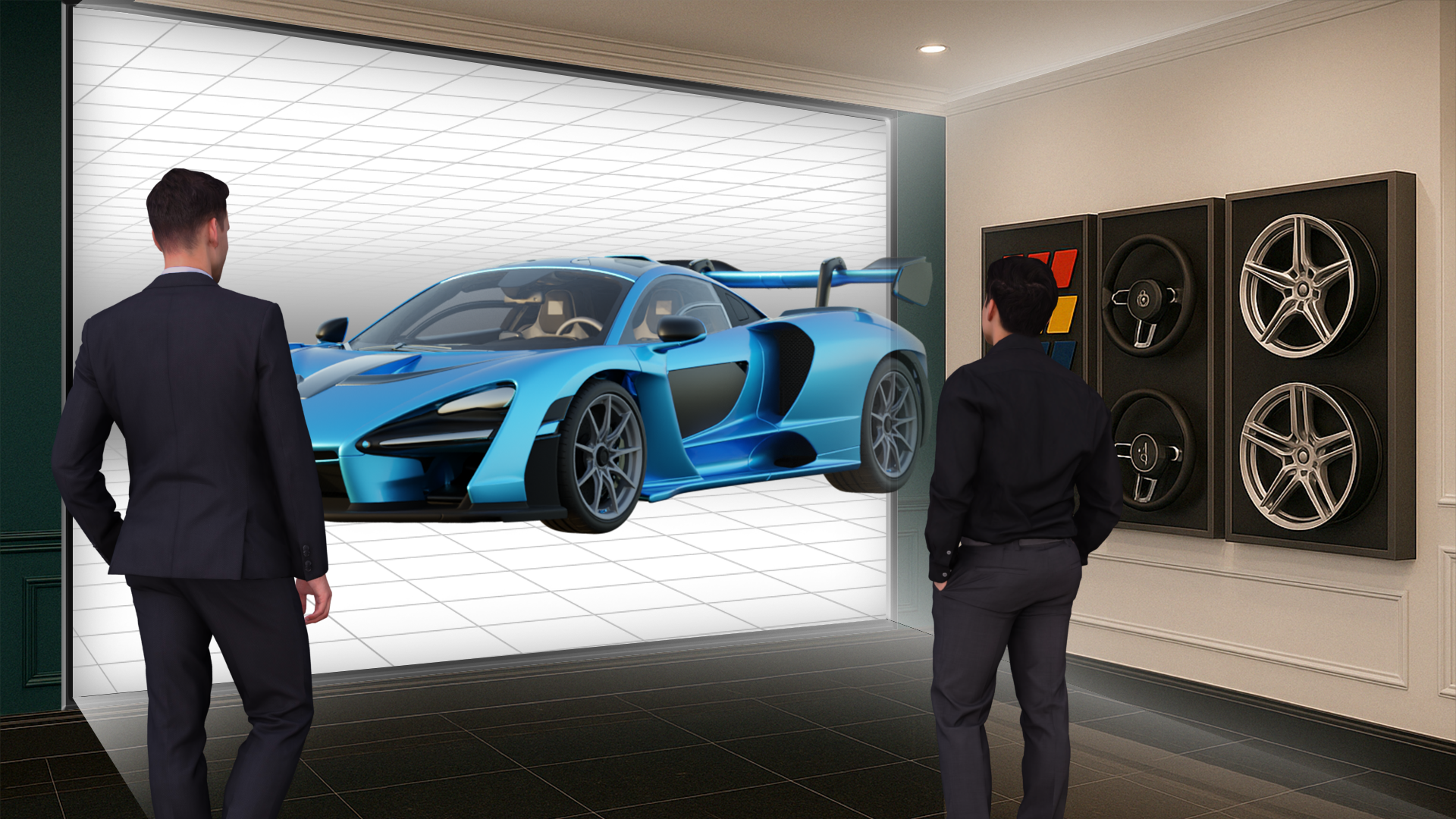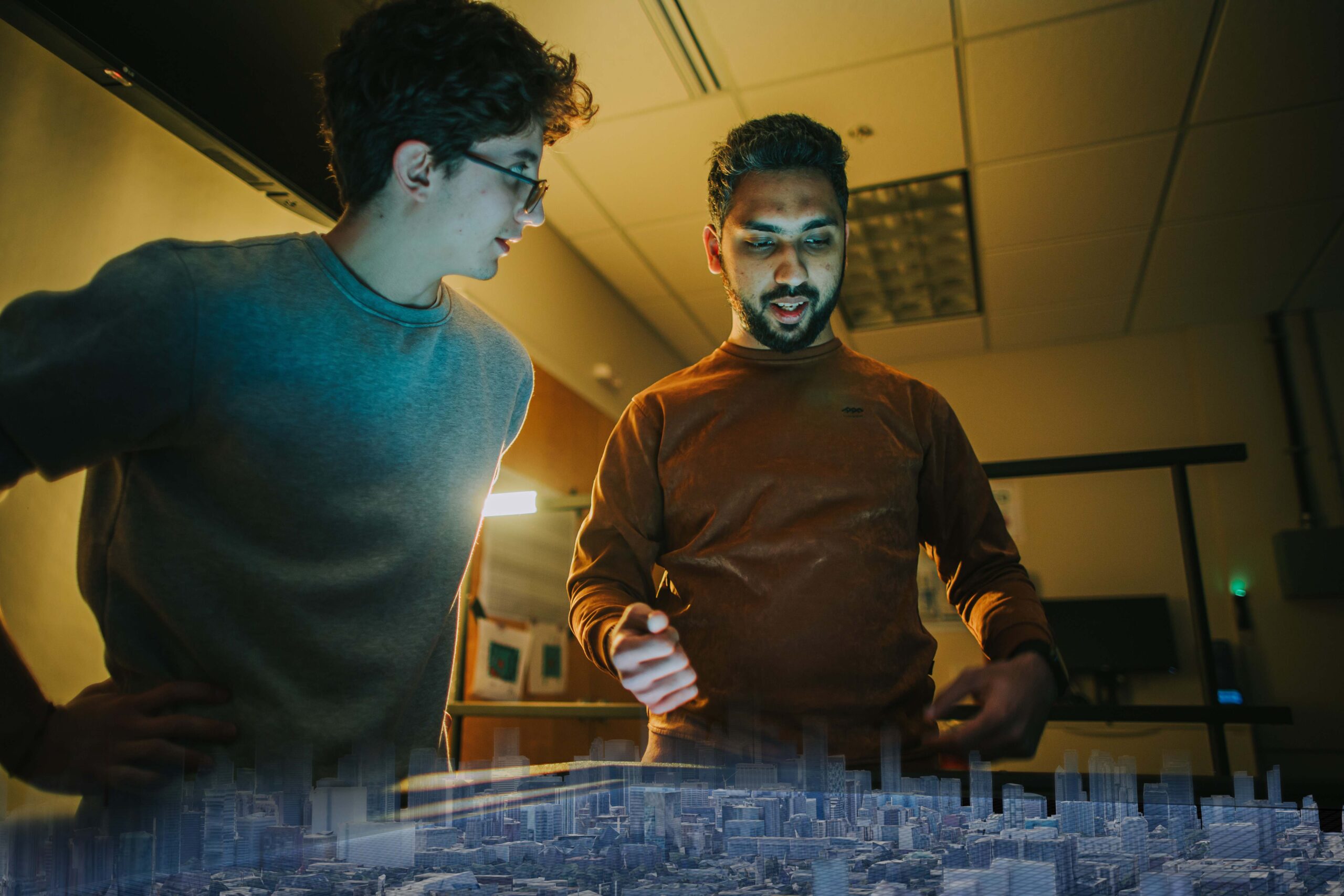Inspired by the futuristic displays in Iron Man, Avalon Holographics sets out to bring science fiction to life. After over a decade of dedicated research and development, they have succeeded in building the world’s first true holographic display table, something most people had only imagined until now.
Creating a practical holographic display wasn’t just a matter of improving existing technology. One of the biggest challenges in holographic display technology is that the entire system has to be built from the ground up to deliver a real, usable solution. It requires new pixel and display panel technology, novel optics, and custom chips to handle massive data rates. It also needs entirely new compression and rendering methods, software applications, and interactive controls to tie it all together and make it functional. It’s not enough to solve just one part of the puzzle: all of it must be solved, holistically, across multiple disciplines, and make everything work seamlessly as a cohesive product.
At Avalon Holographics, they’ve embraced this challenge through a vertically integrated approach. Their teams work across optics, electronics, mechanical engineering, nanofabrication, software, and more. They’ve had to push the boundaries in each of these areas and bring everything together through tight coordination and systems thinking. It takes a huge amount of cross-functional innovation, and that is exactly what’s required to make true holographic display systems a reality.
This comprehensive understanding of the full system has led to a highly optimized display, where blocking challenges in one discipline can be mitigated or even solved through innovation in another. It also gives them the flexibility to adapt and deliver solutions that meet the specific needs of each market, from ruggedization and security in defense to clinical precision and workflow integration in healthcare.

Avalon Holographics’ NOVAC displays allow teams in high-stakes environments to process complex spatial information together, in real time, without the physical strain or isolation of AR and VR headsets. By enabling users to simulate scenarios, assess risks, and adapt strategies on the fly, their technology supports faster, more confident decision-making when it matters most.
NOVAC is a light field display that recreates the full light profile of a scene or object, that gives the illusion of looking at the real thing. It does this by controlling not only the brightness and color of light, but also the direction it travels from every point across the display. By emitting tightly controlled bundles of light in both space and direction, it creates a realistic 3D image with depth, motion parallax, and natural focus cues.
The NOVAC system uses thousands of reflective microdisplays and precision LED lighting to generate a seamless, high-fidelity pixel plane. These microdisplays are mechanically aligned and carefully calibrated to eliminate visual artifacts and ensure uniformity across the image. A custom microlens array sits atop the system, redistributing light directionally. This is paired with a specialized rendering pipeline and software that precisely shapes how light is emitted in every direction. The result is a glasses-free, multi-viewer 3D experience that closely mimics real-world vision, delivering high visual accuracy, depth perception, and realism.
Looking ahead, Avalon Holographics is focused on scaling this breakthrough. Their roadmap moves beyond high-end display tables toward more affordable, flat-panel solutions using OLED-based, tileable technology. With continued investment in nanotechnology and advanced materials, they envision immersive holographic walls, modular tables, and showroom displays that redefine what is possible in display tech. As Avalon Holographics grows, so will their ability to unlock new ways for people to see and engage with their world.

